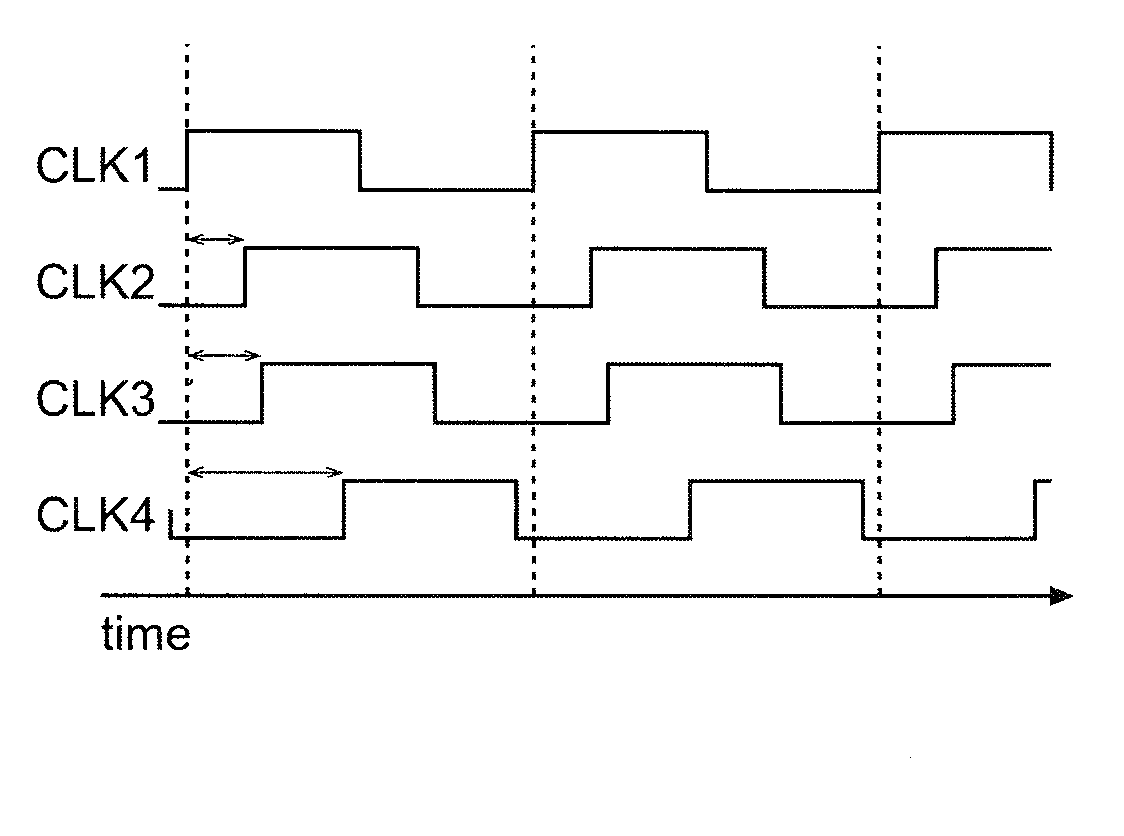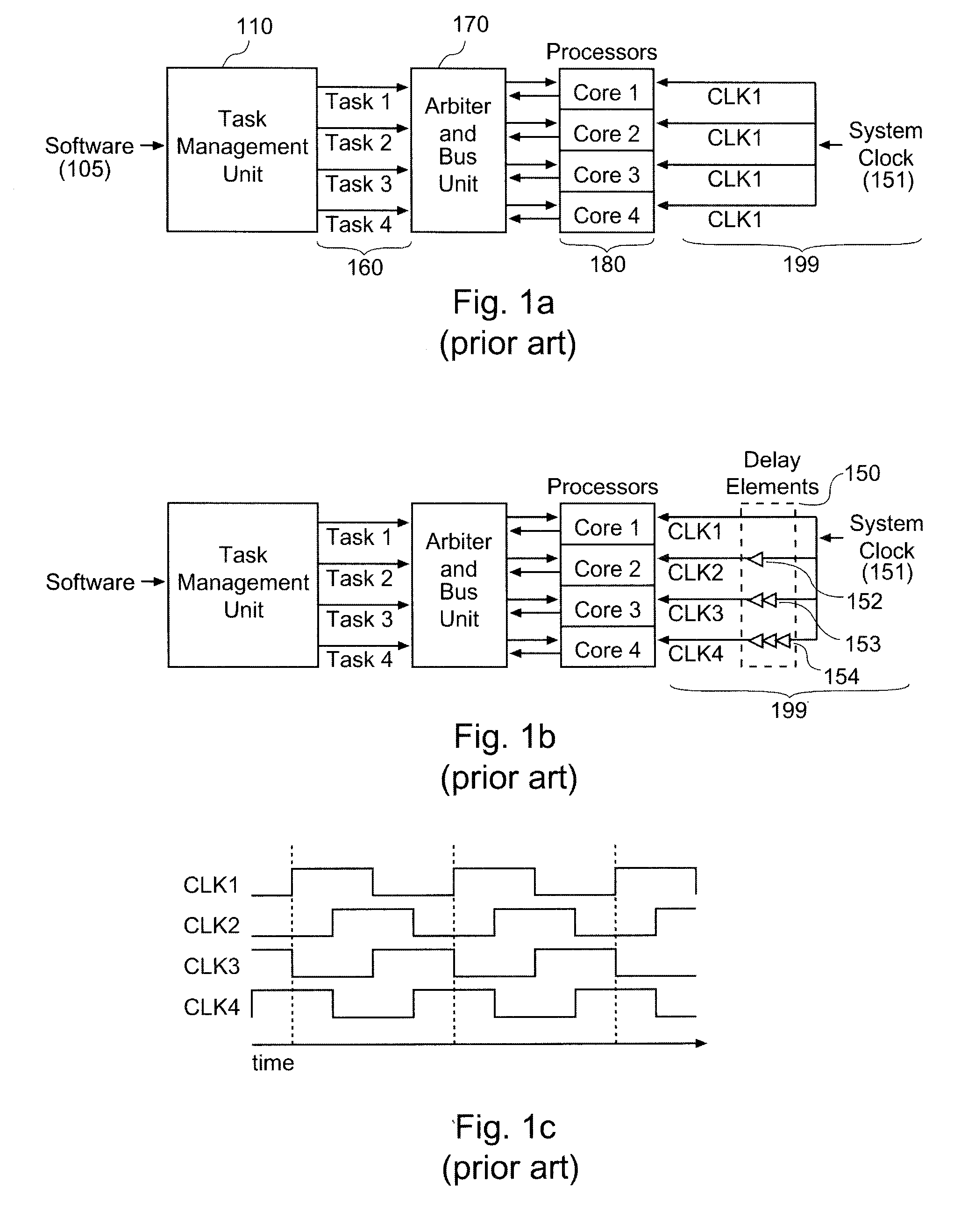Systems and Methods for Reducing di/dt Using Clock Signals Having Variable Delays
a clock signal and variable delay technology, applied in the direction of digital transmission, generating/distributing signals, instruments, etc., can solve the problems of reducing the current rate (di/dt), emi and/or power supply noise, and undesirable emi and power supply noise, so as to reduce the current rate (di/dt). the effect of reducing the current ra
- Summary
- Abstract
- Description
- Claims
- Application Information
AI Technical Summary
Benefits of technology
Problems solved by technology
Method used
Image
Examples
Embodiment Construction
[0027]One or more embodiments of the invention are described below. It should be noted that these and any other embodiments described below are exemplary and are intended to be illustrative of the invention rather than limiting.
[0028]Broadly speaking, the invention includes systems and methods for managing power consumption by components in an electronic device, and more particularly to systems and methods for improving power usage characteristics such as the change in current (di / dt) in integrated circuits such as microprocessors.
[0029]One embodiment comprises a multiprocessor system. The system has multiple (e.g., 4) processor cores for executing tasks that are defined by the software being run on the system. A task management unit receives the software instructions and identifies a set of tasks to be executed by the processor cores. The task management unit also determines which of the tasks should be assigned to which of the processor cores. This is repeated for successive sets ...
PUM
 Login to View More
Login to View More Abstract
Description
Claims
Application Information
 Login to View More
Login to View More - R&D
- Intellectual Property
- Life Sciences
- Materials
- Tech Scout
- Unparalleled Data Quality
- Higher Quality Content
- 60% Fewer Hallucinations
Browse by: Latest US Patents, China's latest patents, Technical Efficacy Thesaurus, Application Domain, Technology Topic, Popular Technical Reports.
© 2025 PatSnap. All rights reserved.Legal|Privacy policy|Modern Slavery Act Transparency Statement|Sitemap|About US| Contact US: help@patsnap.com



